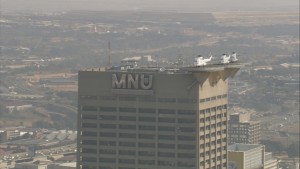For District 9, writer/director Neill Blomkamp turned to a host of Vancouver-based studios, along with Weta Workshop and Weta Digital in New Zealand, to provide alien creatures and other effects for the film. fxguide profiles the work of Image Engine, The Embassy Visual Effects, Zoic Studios and Goldtooth Creative in bringing Blomkamp’s vision to life.
Image Engine
UPDATE: NEW IMAGES JUST RELEASED
Image Engine Gallery
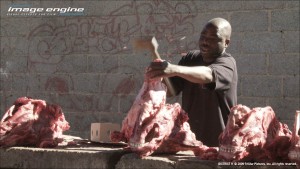
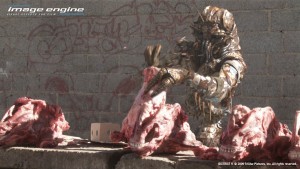
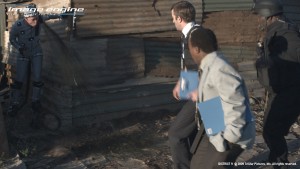
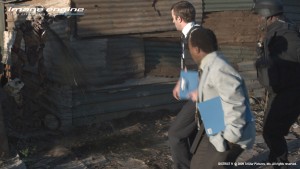
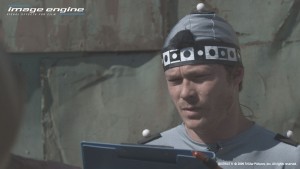
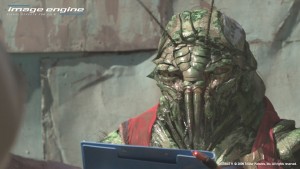
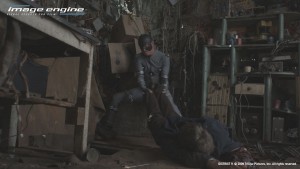
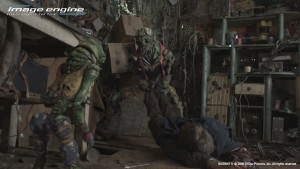
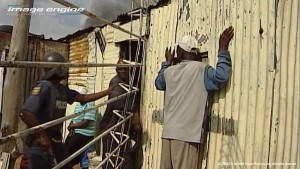
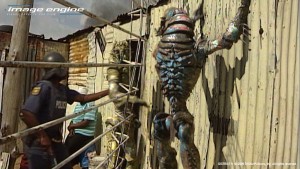
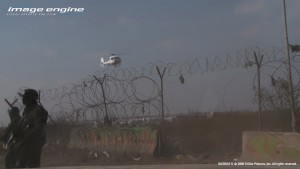
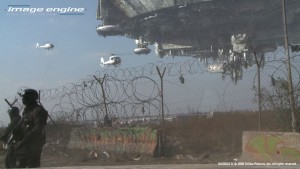
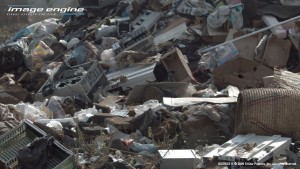
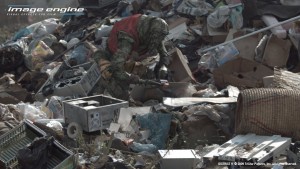
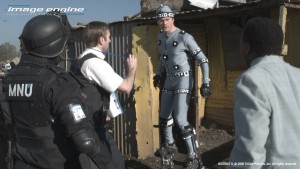
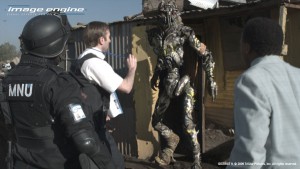
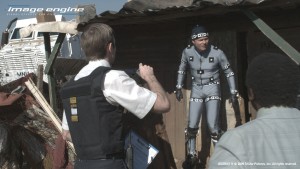
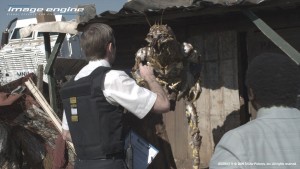
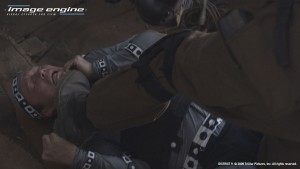
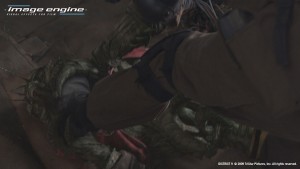
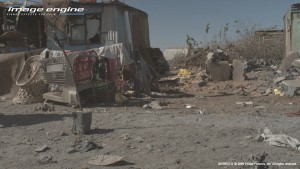
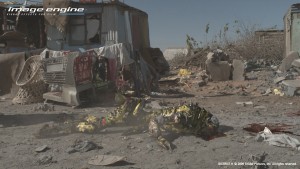
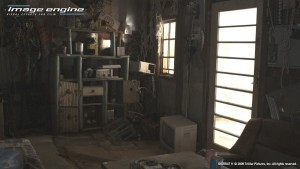
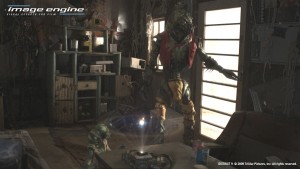
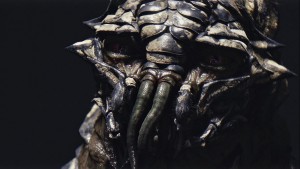 Image Engine was responsible for all of the refugee aliens, relegated to a makeshift camp in Soweto, South Africa, known as District 9. They are controlled by Multi-National United (MNU), a private company more concerned with the potential of alien weaponry than the welfare of the interstellar visitors. When MNU field agent Wikus van der Merwe (Sharlto Copley) contracts an alien virus and begins displaying alien characteristics, he becomes a wanted man for his ability to operate alien weapons. Wikus eventually befriends Christopher Johnson, an alien who has secretly been planning a return to his mother ship and, ultimately, his home planet.
Image Engine was responsible for all of the refugee aliens, relegated to a makeshift camp in Soweto, South Africa, known as District 9. They are controlled by Multi-National United (MNU), a private company more concerned with the potential of alien weaponry than the welfare of the interstellar visitors. When MNU field agent Wikus van der Merwe (Sharlto Copley) contracts an alien virus and begins displaying alien characteristics, he becomes a wanted man for his ability to operate alien weapons. Wikus eventually befriends Christopher Johnson, an alien who has secretly been planning a return to his mother ship and, ultimately, his home planet.
Ramping up to a crew of 110, Image Engine completed 311 visual effects shots for District 9. While these shots were predominantly of digital aliens, the studio also developed the mother ship – which looms ominously above the city – digital helicopters, Casspir troop carriers, weapons and various explosions and gore effects. Image Engine and the other effects vendors shared assets where necessary, generally finalling a shot if their main asset was the foreground element.
For Image Engine, the stark and dusty South African setting brought with it a gritty handheld aesthetic within which the studio had to fit an array of digital aliens. “Neill said the whole film should read like a BBC camera crew went to Johannesburg and they just so happen to catch the events of the film,” said Image Engine executive producer Shawn Walsh. “It wasn’t going to be handheld for effect. It was going to be handheld because it was. Everything had to fit into an overall vision of the movie that was a really a gritty documentary style.”
Alien conceptual designs began at Weta Workshop, with Blomkamp contributing his own photographic collection of bugs and insects. The designs were later refined by Image Engine based on the demands of the alien movement and performance. “Neill wanted the aliens to be very alien,” said Dan Kaufman, the in-house visual effects supervisor for Image Engine. “They were inspired by insects but there’s always that fine line between having something too alien and not human and not being able to relate to it all.” Part of Image Engine’s re-design involved refinement of the alien faces to add shells and tentacles which could be moved to allow for more human-like expressions.
Although the aliens have human-esque characteristics, they were also envisaged as taller than humans and with a very unforgiving waist-line and dog-leg lower limbs to avoid the ‘man-in-suit’ look. The aliens were also designed to be quite distinctive. “People would suggest all kinds of different textures or trinkets to add to the aliens,” recalled Walsh, “and by the end they’d say: ‘How about skate board stickers? How about tribal war paint? How about one guy walks through and door and knocks over a bucket of paint and it just stays there on his head.'”
“We ended up creating really diverse creatures,” explained creature supervisor James Stewart. “Each alien had different body markings, clothing, faces, trinkets – we had the ability to mix and match those things more than you could a Toyota.” Asset lead Nigel Denton-Howes developed a proprietary asset management system called ‘Jabuka’ that allowed the mixing and matching of alien body parts and props.
Production shot location photography in Kliptown, Soweto and Johannesburg. Image Engine COO Peter Muzyers acted as on-set visual effects supervisor and as the digital production supervisor in post-production. “We had grand ideas about running witness cameras and doing on-set mocap for the aliens,” said Muzyers. “Neill’s concern was that that would inhibit him from shooting fast. He wanted to do a lot of improvisation and ad-libbing with the characters. Often he was making up stuff on the shoot, so that limited us in terms of preparation time on set. It was definitely not a traditional studio shoot.”
“He also didn’t want to have a typical video village on set with the sound guy and script supervisor,” continued Muzyers. “They had to be remotely located so he could shoot 360 degrees without having to ask the crew to get out of the way. For a film of that nature and size, the shooting schedule was actually quite short because of the budget constraints on the movie. So he went fast and hard and the pace was relentless.”
Blomkamp ultimately chose a range of digital cameras, including the RED Camera and Sony EX1. The RED Camera was used for about 60% of the film – mostly visual effects intense shots – and the other 40% was a mixture of the Sony EX1 and various other cameras such as a HS100 for security footage and a Sony F950 mounted in a helicopter for aerial shots.
Although the digital cameras clearly made for a more handheld, documentary feel, the result was of course substantial match moving work for each of the visual effects vendors. Image Engine producer Stefanie Boose noted: “There was a huge amount of camera tracking involved. Actually, there almost wasn’t a single locked off shot for us, which really added to the grittiness of the film.” The studio utilised PFTrack, Equalizer and boujou for tracking and Silouhette for paint and roto work.
On set, actor Jason Cope donned a 50% grey suit with markers and worked as a stand-in for the aliens. “Neill was fairly specific about wanting to have someone on set who the actors could interact with,” noted Kaufman. “It helped the other actors, particularly Sharlto Copley in the emotional scenes with Christopher Johnson, but of course it meant we had to paint it out later and restore pieces of the background.”
“The grey suit also gave us a good lighting reference,” observed Muzyers. “It wasn’t as neat as the grey ball you often see, but it gave a fairly good reference as to where light was coming from and how the shadows played on his body.”
Muzyers supervised the shooting of clean plates where possible, although again this proved difficult with the very active camera movement. “Luckily, Neill’s background in visual effects meant that he knew importance of capturing HDRI data. I can never take enough HDRI, so I kind of keep going until they usher me off the set!” LIDAR scans of some of the indoor environments were also undertaken in South Africa.
Back at Image Engine, Steve Nichols supervised the alien animation effort with a total team of 16 animators working with a bi-pedal rig in Maya. The aliens were realised through a combination of roto-mating Cope’s on-set performance, motion capture and keyframe animation.
“I think that grey suit was probably the most embarrassing costume ever,” joked Nichols, “especially as Jason was in the slums of Soweto at the time. They’d just bust in and start shooting stuff with a handheld camera. Some of it’s improvised and he’s running around in a silver jumpsuit which was really tight.”
“Sometimes Jason actually wore stilts to get his eyeline right, but we found we couldn’t copy his motion when he was wearing stilts because he always looked like he was…an alien wearing stilts! There was just something inherent in your motion that’s different when you’re wearing stilts. It made him look a bit like an old man.”
Still, Cope’s grey-suited performance proved to be an excellent, and often followed, reference. “For Christopher Johnson, Neill was very happy sometimes to absolutely copy Jason’s performance,” said Muyzers. “Just the way he squinted at the sun or moved around – Neill wanted that exactly. And then other times we changed the performance to make him more aggravated or to tone it down.”
Added Nichols: “Having Jason there – he was a really good actor – meant there were little ticks and nuances that the animators would beat up and go with. Neill was always about: ‘Don’t do the cliche acting’ – it had to be very much understated. I think it saved us a lot of time as animators not guessing that. It was already there for us.”
Motion capture services were provided by Vancouver based Animatrik Film Design and motion capture supervisor Brett Ineson. “We used motion capture for some of the more crowd based shots,” said Nichols. “One of the things with motion capture was that as animators we went back into the motion and added the buggy ticks and razor sharp movements that a human couldn’t do – you just couldn’t move that fast. It was kind of a guerilla way of working – we’d shoot a lot of mocap but then throw out half of it and decide to keyframe it if that worked better for the shot.”
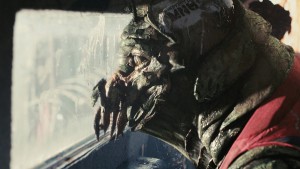 Mocap came in especially handy as reference for Christopher Johnson’s son. “We motion captured my son Sam for some of little CJ,” said Muzyers. “That worked out well for certain shots. You get a typical child response to when an adult interacts with him. It’s not something an adult animator can typically come up with if they don’t necessarily have kids themselves.”
Mocap came in especially handy as reference for Christopher Johnson’s son. “We motion captured my son Sam for some of little CJ,” said Muzyers. “That worked out well for certain shots. You get a typical child response to when an adult interacts with him. It’s not something an adult animator can typically come up with if they don’t necessarily have kids themselves.”
Animators also had to explore a range of emotions for the varying alien personalities. “It was interesting because we actually started with the random different aliens at first for the eviction sequence,” recalled Nichols. “So if an alien was meant to be a big aggressive alien we’d add something more to him. We did a battery of motions that were based on research of slums and the shanty town feeling. They weren’t all perfect superheroes. They had limps and some of them even had gout! Sometimes we’d be working on emotional scenes with Christopher Johnson where his son might be taken away and it’s very subtle and then another time we’d have two aliens roaring at each other tearing apart a fridge.”
Animators completed facial animation in Maya using muscle shapes similar to those of humans. “It was a very simple set up for the animators to create these different expressions,” said Nichols, “which we based on humans by setting up controllers for the face.” The distinctive tentacles, however, were driven by dynamics, based on a system developed in-house by effects TDs at Image Engine originally for rigid body dynamic simulation. “I always enjoy when people tap into existing software and use it for something it wasn’t designed for,” said Muzyers. “It would usually be used for exploding buildings but was adapted for the dangling tentacles. It saved a lot of time – traditionally you would have to do a lot of simulation.”
The tentacle rig allowed for autonomous motion and gave the aliens even more personality. Noted Nichols: “If the alien needed to be more angry, for example, the rig could control how much the tentacles wiggled and we could also animate them distinctly by flipping them around. They also had a soft body feel to them that could give a bit more weight to the character.”
Similar character traits could be portrayed by animating various body parts on the aliens. “They have claws on their chests that we called ‘chestacles’,” said Nichols. “There was always a level of ambient noise that these characters needed to have that helped them feel more real. So when another character got close to an alien, we’d make the chestacles reach out and pull back in a sort of defensive way. It made them more of a creature and not a guy in a suit.”
“One thing we also found was that we put so many nuances in there – like when they blink their eyes dilate – but once you get it in a scene their eyes are dark and in shadow and you don’t see the nuances. But I think you still feel them – it’s important that they’re there and you’d miss them if they were gone. You wouldn’t believe what’s actually moving on those characters if you turned the lights on!”
To integrate the aliens into the scenes, Image Engine research and development lead John Haddon and Muyzers developed an HDRI pipeline and lighting rig that worked for both the stark exterior lighting and the internal environments. The aliens were rendered in DNA Research’s 3Delight, with Nuke used for compositing. “Nuke has very good 3D functionality,” noted Kaufman, “so you can bring things in directly to the program and tweak them in 3D. This was very helpful to get that last little bit of verisimilitude into the alien scenes. We also had tools in Nuke that matched the look of the different media on which the film was shot in terms of grain and noise.”
For Image Engine, working with Blomkamp on District 9 turned out to be a successful and artistically satisfying visual effects adventure in a film that didn’t necessarily push its visual effects wares. “I think the single most successful factor in this was Neil,” said Muzyers. “His ability to drive the team and push us was great. He was always fair but still relentless.”
“Neill’s also quite a talented artist,” said Stewart. “He would see something and ask why you’re doing it. Once you explained it to him he would just get it and then he’d give you the room you needed to create good art, which was a real benefit for the film.”
“I think the overall challenge,” added Kaufman, “was to have all the shots be part of the film as background stuff in a way that doesn’t feel like it’s been inserted in and that’s what I’m most proud of.”
The Embassy
In addition to this story check out our in-depth fxpodcast with the Embassy
Blomkamp enlisted The Embassy Visual Effects, for which he was an original founding partner, to complete the final Exo-suit battle sequence. In it, Wikus tries to elude his own capture and aid the freedom of Christopher Johnson by commandeering a mechanized alien suit of armor, ultimately realised by The Embassy as a CG creation.
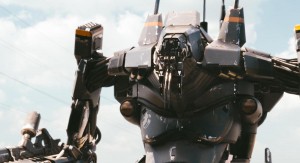 “I went to Johannesburg in July 2008 and shot the first part of the Exo-suit sequence in Soweto”, explained Embassy co-founder and visual effects supervisor Winston Helgason. “When we were on set, Neill and I had to convey how big the suit was and how fast it was going to travel through a particular shot. There’s nothing you could really have for reference on the set because it was basically a 10 foot tall creature.” The design of the Exo-suit evolved throughout production, especially as the sequence grew larger. “In fact,” said Helgason, “we went back to Johannesburg for a second shoot in December 2008, this time with a different visual effects supervisor, Robert Habros.”
“I went to Johannesburg in July 2008 and shot the first part of the Exo-suit sequence in Soweto”, explained Embassy co-founder and visual effects supervisor Winston Helgason. “When we were on set, Neill and I had to convey how big the suit was and how fast it was going to travel through a particular shot. There’s nothing you could really have for reference on the set because it was basically a 10 foot tall creature.” The design of the Exo-suit evolved throughout production, especially as the sequence grew larger. “In fact,” said Helgason, “we went back to Johannesburg for a second shoot in December 2008, this time with a different visual effects supervisor, Robert Habros.”
The Exo-suit sequences were shot using RED Camera which brought up some minor issues visual effects. “There is a skew issue with the RED,” said Helgason. “When you do a whip pan things can bend on the frame because of the rolling shutter. The top of the frame is already updated before the bottom of the frame. By the end of a whip frame you may get a lamp post or a building looking bent, if you actually stop on it. But we were able to deal with that in compositing.”
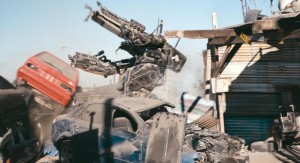 Compositing supervisor Stephen Pepper found the RED to be useful in post-production. “We could go back to the original data files and pull larger plates, say 4K plates, if we needed to get more detail. Or if we needed to resize the plates in any way, we could back to the raw data rather than if we were working on 35mm where we’d have to get the film re-scanned.”
Compositing supervisor Stephen Pepper found the RED to be useful in post-production. “We could go back to the original data files and pull larger plates, say 4K plates, if we needed to get more detail. Or if we needed to resize the plates in any way, we could back to the raw data rather than if we were working on 35mm where we’d have to get the film re-scanned.”
The Embassy approached the approximately 100 shot battle sequence by drawing on previs from Weta and using blocking animation for approval. The Exo-suit rig was built, animated and rendered in Softimage XSI and composited in Shake. SynthEyes was used for tracking the handheld plates. “I recorded the usual HDR photography on set,” said Winston. “We also built some stand-in objects for shadows on him. The ground plane was pretty much reconstructed in every shot so there would be accurate foot falls and dust hits and foot prints.” A special occlusion map also assisted in adding a layer of dust to the suit. “The Exo-suit scenes worked great in harsh sunlight,” said Pepper, “because of the detail you end up seeing in the contrast.”
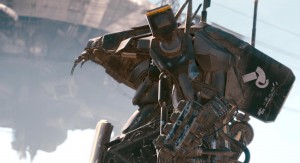 In terms of animation, the Exo-suit movement had to exhibit an initial sense of awkwardness as Wikus is learning to drive, through to becoming a menacing robot and, finally, being in a state of distress. “Neill wanted to convey that there was a human inside this thing,” said Helgason. “As he’s getting more beaten up inside the Exo-suit, the actual suit is also getting more beaten up. A lot of attention was given to the animation to make it look like the suit is vulnerable. It’s not just a walking tank.”
In terms of animation, the Exo-suit movement had to exhibit an initial sense of awkwardness as Wikus is learning to drive, through to becoming a menacing robot and, finally, being in a state of distress. “Neill wanted to convey that there was a human inside this thing,” said Helgason. “As he’s getting more beaten up inside the Exo-suit, the actual suit is also getting more beaten up. A lot of attention was given to the animation to make it look like the suit is vulnerable. It’s not just a walking tank.”
Bullet hits turned out to be a further consideration; and a source of consternation. “Our last two films,” recalled Helgason, “this one and Iron Man, have basically involved the characters being nailed by bullet hits! They’re an absolute pain to do. They’ll take the compositor a couple of days on each shot to add. They’ve got to stay organic and really well integrated and leave marks on the objects themselves. As you watch the sequence, he goes from being relatively clean to having a ton of bullet hits, oil leaks and other damage, which was done with a mixture of CG and compositing.”
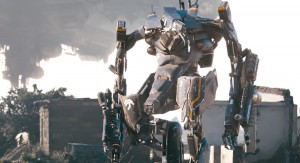 The Exo-suit animation also had to match some on-set practical gags such as a shot of a flying red car crashing into the suit which then goes through a shack wall. “For that shot,” recalled Helgason, “the red car was pulled on a cable. That was rigged up on a high pressure air pressure cable that would actually pull this thing, attached to a crane. That car would go flying once the Exo-suit came through the shack wall. The wall itself was also rigged to blow out of the way and fall down when he comes out.”
The Exo-suit animation also had to match some on-set practical gags such as a shot of a flying red car crashing into the suit which then goes through a shack wall. “For that shot,” recalled Helgason, “the red car was pulled on a cable. That was rigged up on a high pressure air pressure cable that would actually pull this thing, attached to a crane. That car would go flying once the Exo-suit came through the shack wall. The wall itself was also rigged to blow out of the way and fall down when he comes out.”
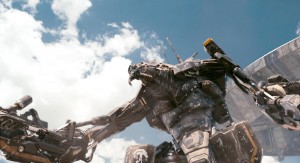 Weaponry fired by the Exo-suit, including guns and missiles, were achieved via practical muzzle flashes and CG composited into the shots. Like other visual effects in the film, the weapons remained grounded in reality. “Neill didn’t want anything in there that was going to stand out,” said Helgason. “There are certain weapons that the Exo-suit uses – such as an arc weapon with electrical beams – but everything was designed for those things to be subdued as well, not to be over the top.”
Weaponry fired by the Exo-suit, including guns and missiles, were achieved via practical muzzle flashes and CG composited into the shots. Like other visual effects in the film, the weapons remained grounded in reality. “Neill didn’t want anything in there that was going to stand out,” said Helgason. “There are certain weapons that the Exo-suit uses – such as an arc weapon with electrical beams – but everything was designed for those things to be subdued as well, not to be over the top.”
Zoic Studios
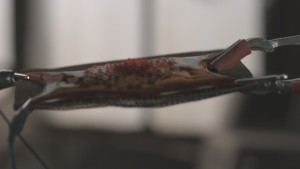 Zoic Studios’ BC office contributed 30 shots featuring an alien fluid, building augmentation, an exploding armored vehicle, alien weapon trails and other explosion and blood enhancements.
Zoic Studios’ BC office contributed 30 shots featuring an alien fluid, building augmentation, an exploding armored vehicle, alien weapon trails and other explosion and blood enhancements.
For shots of an alien liquid pouring into a fuel cell and forming unusual shapes, Zoic referenced the strange behaviours of Ferro fluid. “You can see it on YouTube,” noted Zoic CG supervisor Trevor Adams. “It’s kind of like a magnetic fluid which, if you put a current through it, will create geometric shapes and form little peaks.”
Zoic looked at a number of existing fluid software solutions to achieve the Ferro look. Noted Zoic creative director Patti Gannon: “The problem with some of the fluid sims we tried was that they behave in accordance with the laws of physics – which is good for realistic fluid – but this didn’t obey the laws of physics. Ultimately, Zoic created a surface mesh and then applied sine wave deformers to it. “By animating those on top of each other,” said Adams, “it created that same Ferro fluid effect that Neill wanted.”
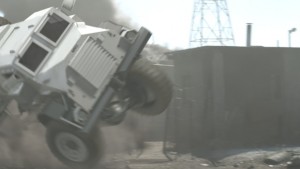 At one point in the film, a Casspir armored vehicle is blown up, flipping over and ploughing into the ground towards camera. Zoic added detail in Maya to a low-resolution Image Engine model of the armored truck and worked on matching the sunny day lighting of the plate. “There was no truck in the plate, just a practical explosion, said Gannon, “so we added in our CG Casspir and as the explosion goes off the thing flips over onto its side and a wheel blows off.” The truck was rendered in mental ray, and augmented with lots of smoke and dust. “The people who make that armored vehicle probably aren’t going to be very happy with it, noted Gannon, “because we blew up something that probably shouldn’t. But it was a really fun shot to do!”
At one point in the film, a Casspir armored vehicle is blown up, flipping over and ploughing into the ground towards camera. Zoic added detail in Maya to a low-resolution Image Engine model of the armored truck and worked on matching the sunny day lighting of the plate. “There was no truck in the plate, just a practical explosion, said Gannon, “so we added in our CG Casspir and as the explosion goes off the thing flips over onto its side and a wheel blows off.” The truck was rendered in mental ray, and augmented with lots of smoke and dust. “The people who make that armored vehicle probably aren’t going to be very happy with it, noted Gannon, “because we blew up something that probably shouldn’t. But it was a really fun shot to do!”
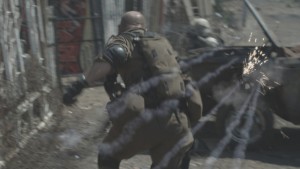 Zoic also contributed other explosion effects throughout the film. “We did a lot of ‘alienising’ of the explosions,’ said Gannon. “Whenever an alien explosion happened it had an electrical current run through it. We added this electricity and some evidence of blue colouring.” For a shot of the aliens blowing up the front of the MNU headquarters, Zoic artists alienised the explosion of the front windows as well as adding in details of rooms behind the blown out glass.
Zoic also contributed other explosion effects throughout the film. “We did a lot of ‘alienising’ of the explosions,’ said Gannon. “Whenever an alien explosion happened it had an electrical current run through it. We added this electricity and some evidence of blue colouring.” For a shot of the aliens blowing up the front of the MNU headquarters, Zoic artists alienised the explosion of the front windows as well as adding in details of rooms behind the blown out glass.
Other shots completed by Zoic included the addition of helicopter landing pads to buildings, modeled on a luxurious Dubai hotel, and the insertion of 3D MNU signage onto the agency’s headquarters. The studio also contributed several alien weapon trails, mostly achieved using CG particles.
As with all of the vendors on District 9, Zoic spent time matching the stark lighting of the film with its bleached out appearance. “I think getting all of the elements to sit into the scenes was a little bit different,” recalled Gannon, “because usually you’re trying to make things look pretty. Instead, this was very raw-looking, so it was a lot of fun to work on.”
Goldtooth Creative
Goldtooth Creative produced several hologram shots for District 9, farmed out to the newly formed studio by Image Engine. These included a shot of little Christopher Johnson looking at a hologram of his home planet system and the holograms and heads up displays shown inside the drop ship.
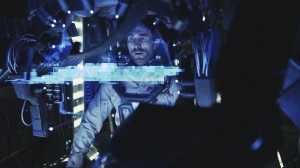 After completing a successful test, Goldtooth Creative visual effects supervisor Keegen Douglas oversaw the creation of the holograms into shots featuring an Image Engine digital alien. “Image Engine would give us the plate and also the match-moved camera and scene with all the geo in there, and all the characters,” said Keegen. “They also had some LIDAR scans of the inside of the ship, so it was all beautifully set up in 3D for us.”
After completing a successful test, Goldtooth Creative visual effects supervisor Keegen Douglas oversaw the creation of the holograms into shots featuring an Image Engine digital alien. “Image Engine would give us the plate and also the match-moved camera and scene with all the geo in there, and all the characters,” said Keegen. “They also had some LIDAR scans of the inside of the ship, so it was all beautifully set up in 3D for us.”
A team of seven artists at Goldtooth, working over two months, utilised After Effects’ two-and-a-half dimensional capabilities to create on screen displays of planets, moons, star systems and running numbers and letters. One particular shot involved Christopher Johnson in the spaceship looking through a starfield and plotting a course back to his home from earth. “The shot starts off with a shot of CJ sitting in his chair,” relayed Keegen. “It’s an over-the-shoulder shot and we seem him punching up some little call-ups. As soon as he would type into a different call-up, the whole hologram would change and push in. But not only does it change, we actually go through the hologram and the stars grow bigger, almost as if we were inside of a microcosm and we were going deeper and deeper and deeper into the solar system.”
“Our artists would take the 3D camera we got from Image Engine,” said Keegen, “and export that to After Effects so that we had exactly the same camera in there as we have in 3D. Then the guys would create all of the elements, render them off of the background plate so they could see where the alien was actually hitting buttons in space. Then they would stick in these 3D heads-up-display holograms and have them animate and move and turn certain buttons on.”
Once elements were animated in After Effects, Keegen assembled the created assets inside of Nuke, often with over 100 elements. Finally, the Nuke scenes and various media were handed off back to Image Engine for compositing. “The holograms changed a little from initially super clean crisp holograms to almost gritty, super dirty holograms to fit in with the aesthetic of the film,” noted Keegend. “Image Engine really needed to handle the final comps so the director could adjust what he wanted at the end.”
Keegen said the challenge (and fun part) of the shots was matching the holograms to the character’s movements: “When we first got the plates we thought it was kind of like a conductor orchestrating a symphony. The hands movements were really fast, very fluid, hitting all these buttons, with all kinds of crazy stuff going on. It was fantastic!”
Weta
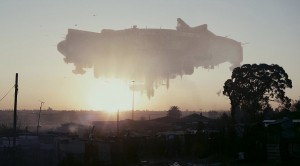
Weta also contributed to the film, initially it was expected that they would be the primary facility due to the relationship with the films producer Peter Jackson. In the end Weta had to take a reduced role due to the scheduling conflicts with the epic James Cameron Avatar.
In the end Weta contributed to the film by working on the shots with the Alien space ship. In the cases where shots required both a background ship and foreground character animation or other visual effects, Weta would pre-comp the ship and provide the completed comp to the relevant facility.

